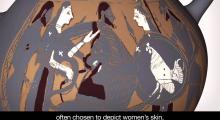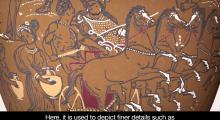Themes
Medium
Museum Practice
Video Type
In the ancient Mediterranean world, the earliest-known mosaics, which date to the 8th century B.C., were made of large, water-smoothed pebbles arranged in geometric patterns. Over time, they were made of tiny pieces of glass or stone, called tesserae, which were used to create intricate patterns and images on the floors, walls, and ceilings of public and private spaces. By the Roman and Byzantine periods, an empire-wide trade existed for luxurious materials, such as marble and granite, which were used in their creation. Filmed at the Chicago Mosaic School, this video explores the materials used to make mosaics.
This video was produced with the generous support of a Long-Range Fund grant provided by the Community Associates of the Art Institute of Chicago. It was created for LaunchPad, a program of digital interpretive materials that supplement the viewing of works of art on display in the Art Institute of Chicago's galleries.
Comments
Brought to you by AIC






